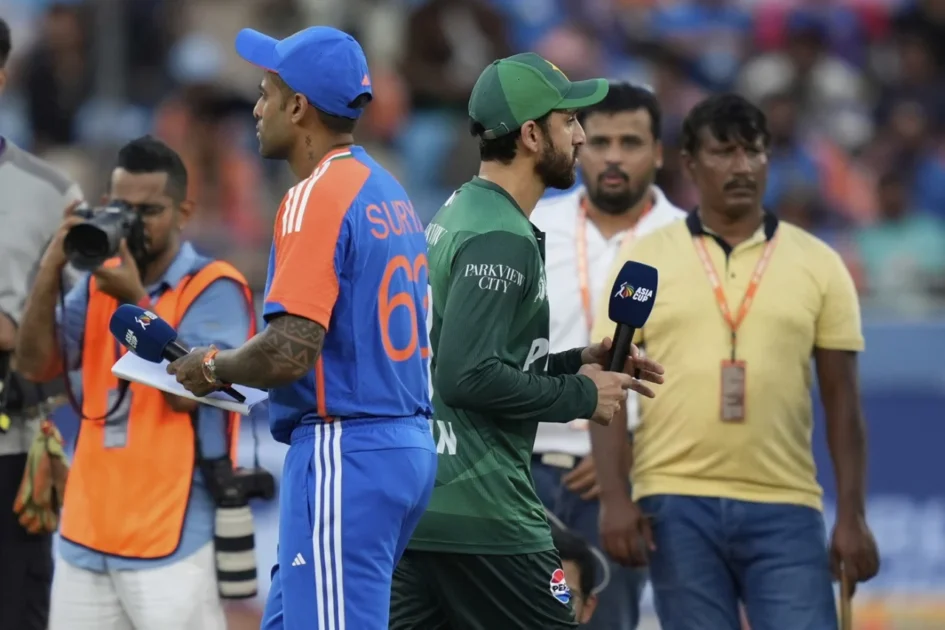- Web Desk
- Nov 12, 2025
Red lines and real talk
LAHORE: In the aftermath of the India-Pakistan standoff dubbed Operation Sindoor, the regional temperature between two nuclear-armed neighbors once again rose alarmingly. But this time, the diplomatic battleground extended far beyond the Line of Control. At the Shangri-La Dialogue in Singapore, Asia’s premium defense forum attended by global military brass including the US Defense Secretary, the statements exchanged didn’t just echo military realities, they exposed the deep-seated political gamesmanship shaping South Asia’s most volatile relationship.
Much attention was given to India’s Chief of Defence Staff, General Anil Chauhan, who admitted initial losses during Operation Sindoor. His acknowledgment that the Indian Air Force had to reassess tactics after losing jets to Pakistani firepower caused a storm back home. Indian media commentators pounced on him, calling his statement “undiplomatic,” while others praised his honesty, arguing he was a soldier, not a spin doctor. Yet what truly shifted the conversation was the response from Pakistan’s Chairman Joint Chiefs of Staff Committee, General Sahir Shamshad Mirza, who articulated Pakistan’s position with clarity and composure that left a mark on the international audience.
Mirza reminded the world that Pakistan’s retaliatory posture is not just rhetoric. He laid out a critical dilemma: there are no reliable mechanisms for de-escalation in the event of an India-Pakistan military flare-up. When Pakistan attempted to open communication channels during the crisis, India reportedly did not respond constructively. The region, home to billions of people, is held hostage by this lack of crisis management and the dangerous politicization of conflict on both sides. He raised pressing concerns about the weaponization of water resources and violations of the Indus Waters Treaty, warning that these provocations are undermining international law and pushing the subcontinent into a pre-crisis era once again.
Mirza also addressed the strategic imbalance between the two nations, pointing out how India’s geographic depth offers it a layer of protection that Pakistan does not enjoy. Pakistani cities lie dangerously close to the border, which means even short-range missile strikes could cause devastating damage. Despite this, during the recent flare-up, Pakistan maintained its deterrence by using FATA missiles with a range of 150 to 200 kilometers, resisting the temptation to escalate further.
However, this restraint might not last. The Pakistani military has signaled that next time, it will not wait to retaliate. The “strategic restraint” doctrine is being reconsidered. The fake news cycle in Indian media, which included the false claim that Pakistan used its Shaheen missile, only added fuel to the fire. Videos were circulated and then retracted by Indian Army sources, highlighting the confusion within Indian defense circles.
What makes this episode different is the absence of the usual political rhetoric from the Indian government. It’s as if India’s top political leadership stepped back and pushed military figures to the front lines of public discourse. This deliberate silence raises serious questions. Why have India’s politicians gone quiet, especially when even some prominent Indian voices like Subramanian Swamy and Shashi Tharoor are criticizing their own establishment? Swamy bluntly stated that Modi’s celebration of the operation was misplaced, especially since the outcome included a humiliating pause and the downing of Indian jets. Even Tharoor expressed disappointment when Columbia expressed solidarity with Pakistan during the crisis.
Meanwhile, Pakistan’s diplomatic front has been vibrant. A delegation led by Bilawal Bhutto has been meeting international stakeholders, including UN Secretary-General Antonio Guterres. They have managed to present Pakistan’s case not just on defense, but also on trade, development, and regional peace. Prime Minister Shahbaz Sharif’s visits to Turkey, Azerbaijan, and Turkmenistan have also signaled a wider diplomatic reset. The outreach to China, especially through ISARDA, and improving ties with the United States through mineral and cybersecurity deals, are adding layers to Pakistan’s global engagement strategy. Remarkably, international media outlets like Bloomberg and The Diplomat are now suggesting that Pakistan emerged stronger and more confident from this conflict.
Yet, back in India, internal dissent is growing louder. Air Chief Marshal VR Chaudhari has raised concerns about delays in defense procurements, saying that not a single project is on track. Air Chief Marshal F P Singh went as far as to question why empty promises are made in the first place. The cracks are not just strategic but institutional. This reveals the pressures India faces in transforming into a regional hegemon while its military-industrial complex fails to deliver on promises.
What we’re witnessing is a shift in narrative. The idea that India, which was being groomed by the West as a counterweight to China, lost face against Pakistan has disturbed many in Washington. Pakistan, long painted as a problem child of the region, used strategic patience, smart diplomacy, and effective deterrence to outmaneuver a regional giant. This time, it wasn’t the missiles alone that mattered, it was the message.
But for Pakistan, the challenges ahead are clear. The country must now strengthen its air defense systems, counter India’s new missile doctrines, and work with the international community to raise the threshold of war. Rational minds may still wear uniforms on both sides, but the politicization of military actions in India, especially under Modi’s watch, is making rational dialogue increasingly difficult.
The recent conflict wasn’t just about air strikes or border skirmishes. It was about narratives, control of cyberspace, strategic signaling, and regional diplomacy. And in this complex chessboard, Pakistan, often underestimated, just played a sharper game.






